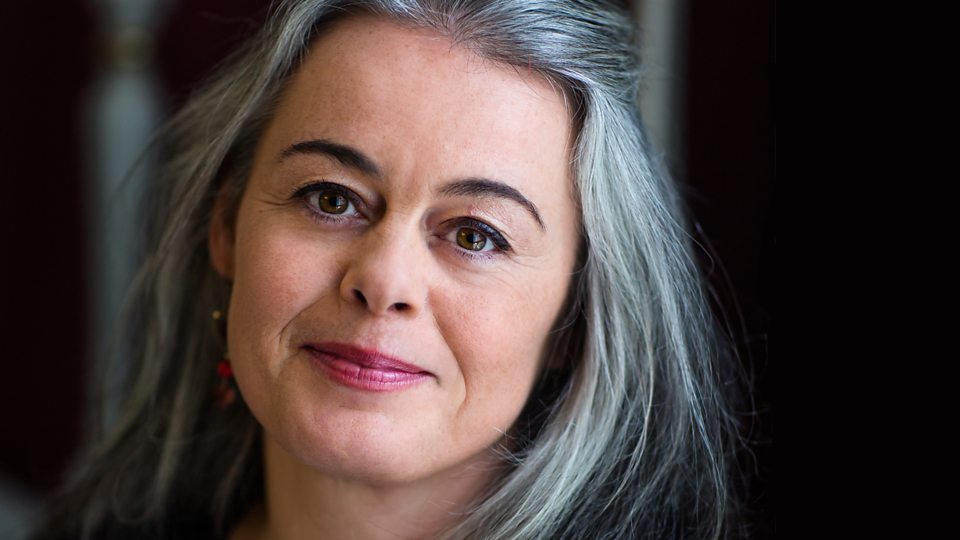Christmas Oratorio, LPO, Jurowski, RFH review - right piece, wrong place | reviews, news & interviews
Christmas Oratorio, LPO, Jurowski, RFH review - right piece, wrong place
Christmas Oratorio, LPO, Jurowski, RFH review - right piece, wrong place
Chorus and orchestra are the brightest baubles on Bach’s seasonal tree

Just when you can scarcely move for Messiahs, two Christmas Oratorios came along at once on Saturday night. That’s London concert schedules for you.
What Jurowski uncovered was the degree to which the cantatas hang together as a hexaptych – and the extent to which they don’t. To serve for Christmas in Leipzig in 1733, Bach adapted the music from three recent secular cantatas. He put his favourite librettist to work for the retexted arias and choruses (Picander, of the St Matthew), fashioned a new tonal scheme, and brought in an Evangelist to tell the story. Yet each cantata was written for a separate day of the Christmas season. On each is bestowed a self-contained dramatic arc.
It may glisten with treasure for the listener like a box of crystallised fruit, but the oratorio sets a stiff challenge for the performers when taken complete
Dove-tailed tempi lent an underlying pulse to the 64 separate movements so that they opened in sequence like the windows of an Advent calendar to illuminate a single Nativity scene. With carefully scaled dynamics Jurowski resisted the law of diminishing returns so that trumpet and drums brought fresh energy to the opening of the sixth cantata, two and a half hours in, rather than a weary sense of enough already.
It may glisten with treasure for the listener like a box of crystallised fruit, but the oratorio sets a stiff challenge for the performers when taken complete. By the time of that sixth cantata the choral tenors were audibly flagging. Not so the trio of trumpeters, led with awesome security in their descant flourishes by Paul Beniston. In fact the most strongly projected moments of joy and rest and occasional pathos were supplied by the concerted forces on stage, constituted by a slimmed-down LPO and a reduced but still healthy, 70-strong contingent of the London Philharmonic Choir, with an alto section discreetly and astutely bolstered by a few countertenors for added bite. A symphonic chorus is well-equipped to handle the unusually orchestral texture of Bach’s choral writing in much of the oratorio; it was only the more traditionally contrapuntal numbers that lacked the freewheeling agility of more compact ensembles such as the Monteverdi Choir or, indeed, the Dunedin Consort over the river. In a splendid snowy-trimmed Mrs Christmas dress (sadly not pictured above), Maria Keohane had exactly the required angelic tone for the scarce soprano solos, at least until she was strained to the limit of her declamatory power by her final aria. If only Bach had not been so considerate of his young charges not to overtax them during an exacting festive schedule. Stephan Loges was a bass of avuncular authority and the alto Anke Vondung grew in both volume and authority through the evening, her every step shadowed by Juliette Bausor’s flute in her moment of glory, the second cantata’s heart-stopping lullaby, but also constrained by Jurowski’s tight directorial rein.
In a splendid snowy-trimmed Mrs Christmas dress (sadly not pictured above), Maria Keohane had exactly the required angelic tone for the scarce soprano solos, at least until she was strained to the limit of her declamatory power by her final aria. If only Bach had not been so considerate of his young charges not to overtax them during an exacting festive schedule. Stephan Loges was a bass of avuncular authority and the alto Anke Vondung grew in both volume and authority through the evening, her every step shadowed by Juliette Bausor’s flute in her moment of glory, the second cantata’s heart-stopping lullaby, but also constrained by Jurowski’s tight directorial rein.
It made good stage sense to tuck the Evangelist in behind the stylish continuo section, but the lively German inflection of Julian Ovenden too often struggled to project even halfway back in the stalls; even duetting at the front of the stage with the polished obbligato violins of Tania Mazzeti and leader Kevin Lim, his tenor was scaled to the performance rather than to the hall. And here’s the Brussels sprout (please, no letters): the Christmas Oratorio in the Royal Festival Hall is as spiritual an experience as hearing Once in Royal... while browsing for bleach (this also happened to me on Saturday).
Everyone on stage had the right ideas, and the tools to put them across. Even the two Christmas trees looked spruce enough. But the piece is imbued with space even more than season, it seems, and it’s a space that may not be mapped onto the brightly lit, functional and deeply secular expanse of the RFH. The pastoral comfort of the second cantata, the philosophical contemplation of the fourth, the urgent anticipation of the coming of Christ in the fifth: all were, if not lost, then muted in translation. Perhaps not coincidentally, it was only in the sixth’s warlike defence of Epiphany’s revelation against enemies from both within and without, and in the final chorale’s anticipation of death and Passion, that the words began to mean something.
rating
Explore topics
Share this article
Add comment
The future of Arts Journalism
You can stop theartsdesk.com closing!
We urgently need financing to survive. Our fundraising drive has thus far raised £49,000 but we need to reach £100,000 or we will be forced to close. Please contribute here: https://gofund.me/c3f6033d
And if you can forward this information to anyone who might assist, we’d be grateful.

Subscribe to theartsdesk.com
Thank you for continuing to read our work on theartsdesk.com. For unlimited access to every article in its entirety, including our archive of more than 15,000 pieces, we're asking for £5 per month or £40 per year. We feel it's a very good deal, and hope you do too.
To take a subscription now simply click here.
And if you're looking for that extra gift for a friend or family member, why not treat them to a theartsdesk.com gift subscription?
more Classical music
 RNCM International Diploma Artists, BBC Philharmonic, MediaCity, Salford review - spotting stars of tomorrow
Cream of the graduate crop from Manchester's Music College show what they can do
RNCM International Diploma Artists, BBC Philharmonic, MediaCity, Salford review - spotting stars of tomorrow
Cream of the graduate crop from Manchester's Music College show what they can do
 Classical CDs: Bells, whistles and bowing techniques
A great pianist's early recordings boxed up, plus classical string quartets, French piano trios and a big American symphony
Classical CDs: Bells, whistles and bowing techniques
A great pianist's early recordings boxed up, plus classical string quartets, French piano trios and a big American symphony
 Monteverdi Choir, English Baroque Soloists, Suzuki, St Martin-in-the-Fields review - the perfect temperature for Bach
A dream cantata date for Japanese maestro and local supergroup
Monteverdi Choir, English Baroque Soloists, Suzuki, St Martin-in-the-Fields review - the perfect temperature for Bach
A dream cantata date for Japanese maestro and local supergroup
 Aldeburgh Festival, Weekend 1 review - dance to the music of time
From Chekhovian opera to supernatural ballads, past passions return to life by the sea
Aldeburgh Festival, Weekend 1 review - dance to the music of time
From Chekhovian opera to supernatural ballads, past passions return to life by the sea
 Dandy, BBC Philharmonic, Storgårds, Bridgewater Hall, Manchester review - a destination attained
A powerful experience endorses Storgårds’ continued relationship with the orchestra
Dandy, BBC Philharmonic, Storgårds, Bridgewater Hall, Manchester review - a destination attained
A powerful experience endorses Storgårds’ continued relationship with the orchestra
 Hespèrion XXI, Savall, QEH review - an evening filled with laughter and light
An exhilarating exploration of innovation in 16th and 17th century repertoire
Hespèrion XXI, Savall, QEH review - an evening filled with laughter and light
An exhilarating exploration of innovation in 16th and 17th century repertoire
 theartsdesk at the Dublin International Chamber Music Festival - musical revelations, nature beyond
Artistic director Ciara Higgins’ programming ensures plenty of surprises
theartsdesk at the Dublin International Chamber Music Festival - musical revelations, nature beyond
Artistic director Ciara Higgins’ programming ensures plenty of surprises
 Müller-Schott, RSNO, Søndergård, Usher Hall, Edinburgh - spectacular Shostakovich to end the season
Brilliant orchestral results, while the cellist walks a tightrope in the Second Cello Concerto
Müller-Schott, RSNO, Søndergård, Usher Hall, Edinburgh - spectacular Shostakovich to end the season
Brilliant orchestral results, while the cellist walks a tightrope in the Second Cello Concerto
 Classical CDs: Cannons, culverts and mooching cattle
Box sets celebrating a pair of conductors, plus baroque vocal music and a beguiling bassoon anthology
Classical CDs: Cannons, culverts and mooching cattle
Box sets celebrating a pair of conductors, plus baroque vocal music and a beguiling bassoon anthology
 Marwood, Crabb, Wigmore Hall review - tangos, laments and an ascending lark
Accordion virtuoso’s brilliant arrangements showcase the possibilities of the instrument
Marwood, Crabb, Wigmore Hall review - tangos, laments and an ascending lark
Accordion virtuoso’s brilliant arrangements showcase the possibilities of the instrument

Comments
This was such a deeply